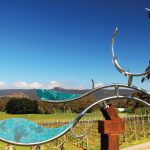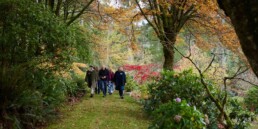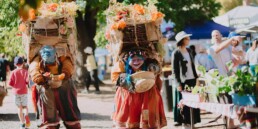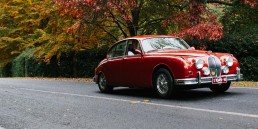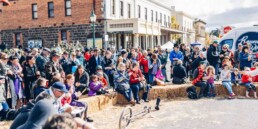It is very quiet and still on the craggy hilltop until a biting wind whips the gum leaves from their ghostly limbs and newly quenched grass starts a frenzied jig.
Around 500 metres below, a fox appears, more handsome than cunning and in considerably less of a hurry than the blue-tongued lizard darting beneath the lofty granite rocks.
This place, devoid of fanfare and not on any tourist map, demands pause for reflection. Unknown to even the most dedicated historians, it is linked to Australia’s most famous folk legend.
Ned Kelly is believed to have used this spot as a lookout. And it is easy to see why.
“He would use it to understand the movement of the troops in and out of town, and to make his paths around this knowledge,” said Jan Clark, whose family has owned the 273-acre property on the Lancefield-Kilmore Road since 1975.
The view from the hill is vast, sweeping over verdant pastures, dams and vineyards towards mountains to the north and the townships of Kilmore, Broadford and Seymour on the eastern side. Sunrise, in particular, is a sight to behold. And in the evening, it is intoxicating to sit beside a campfire gazing up at the impossibly starry masterpiece of a sky.
The Kelly family was well known to the police, and sympathisers continue to argue that Ned and various kin were persecuted. Although the Kelly Gang of four did not become outlaws until 1878 when Ellen was jailed for the attempted murder of a policeman, it is reasonable to accept that Ned would have tried to stay ahead of the police from a young age.
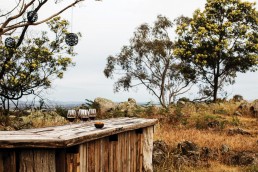
“When Ned was a young teenager living in Beveridge, his father was put in jail,” said Jan. “Ned used to hang out at the lookout because it is the most elevated piece of land in the area.”
In 1866, Ned’s father John “Red” Kelly, an Irish born convict who completed almost seven years of imprisonment in 1848, was sentenced to six months of hard labour for stealing a calf despite maintaining his innocence. Ned’s mother Ellen, her brothers and other family members also had criminal records.
Ned became “head of the family home” before his twelfth birthday. Within a couple of years, he was stealing horses and cattle with the bushranger, Harry Power, and by the age of 16 was serving his first jail term.
The Kelly history involves the Macedon Ranges due to Ned’s appearance at the Kyneton Courthouse when he was 15, while on remand over two robberies. A letter he wrote to a local police sergeant who showed him kindness is on display at the Kyneton Museum.
If only the wind blowing over Spring Hill Estate by Lancemore talked instead of whistled, it could add at least one more chapter to a story that is reportedly referenced each week, on average, somewhere in the world.
Ned Kelly lookout is a spot that needs to be seen to be believed. Visitors can stand where he once stood at Spring Hill Estate by Lancemore, award-winning boutique accommodation and function venue.
lancemore.com.au/spring-hill-estate
Nadine Hartnett is a freelance writer and the founding manager of the Macedon Ranges Art Trail.
Photos: Ned Kelly’s Lookout. Photography by Kara Rosenlund
About the author

Nadine Hartnett
Nadine Hartnett is a freelance writer and the founding manager of the Macedon Ranges Art Trail. She describes herself as a ‘local art enthusiast’ but she’s so much more to the Macedon Ranges art community - supporting local artists through advocacy, exhibitions and promotions.
-
Nadine Hartnetthttps://daylesfordmacedonlife.com.au/author/nadine-hartnett/November 28, 2019
-
Nadine Hartnetthttps://daylesfordmacedonlife.com.au/author/nadine-hartnett/July 8, 2021
Share this article
While You're Here
A Garden Lover’s Guide to Mount Macedon
Melina Goddard and Annie Mulkearns, the duo behind Mount Macedon Tours give us the low-down on the…
Our Top Picks – Macedon Ranges Autumn Festival
Autumn truly is one of the best times to visit the Macedon Ranges, as the leaves put on their…
Eat & Drink,Outdoor Experiences,Creative Arts,History & Culture,Health & Wellness
From Slow Flower Tales to Slow Flower Trails
What was brought home through these experiences was how exceptionally rich the Daylesford Macedon…
Places to Go, Colours to See
Autumn 2020 will go down as one of the most anticipated seasons in Australian history. Cool…
Bridges of Macedon County
Bridges of Maddison County, the modern-day love affair played out on the big screen by Clint…
What’s On in Autumn
Upcoming events in Autumn throughout the Daylesford and Macedon Ranges.
Health & Wellness,Eat & Drink,Outdoor Experiences,Creative Arts


